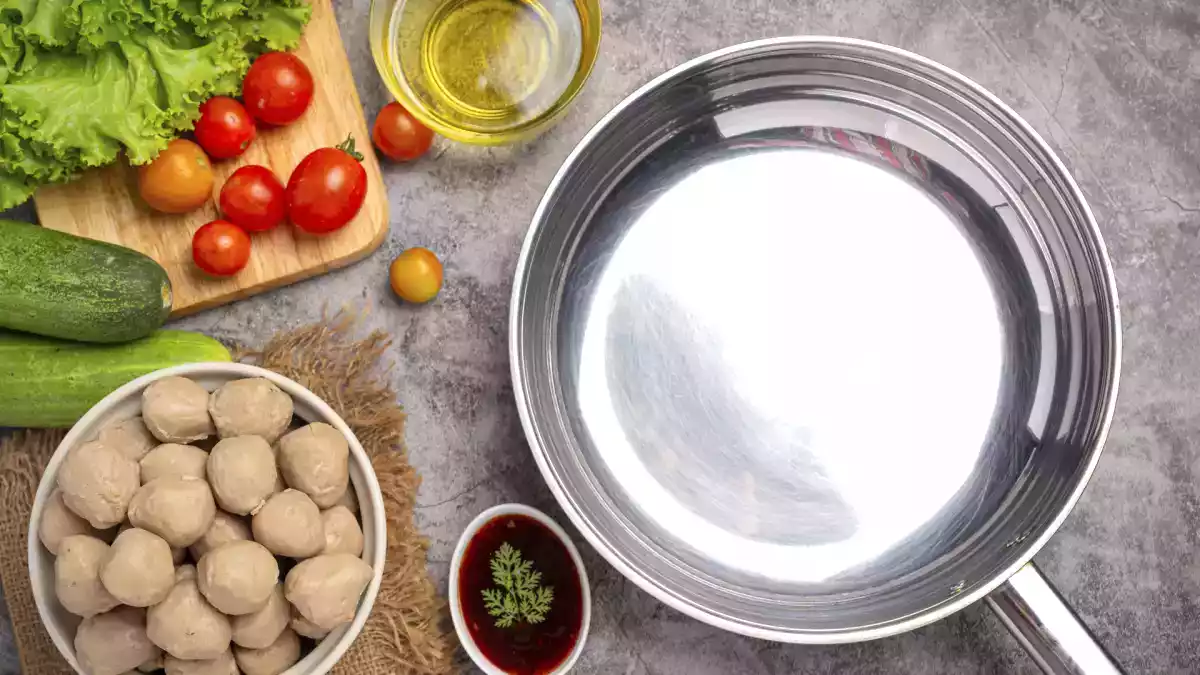Goodbye Teflon, hello stainless steel: The ultimate guide to mastering toxic-free frying pans

In recent years, stainless steel pans have gained popularity among healthy cooking enthusiasts, thanks to their durability and lack of potentially toxic coatings. However, many are still unaware that each morning, when preparing breakfast, they could be releasing harmful chemicals into their food by making scrambled eggs or pancakes.
For decades, Teflon-coated nonstick pans have dominated the market, touted as the perfect solution for cooking without food sticking. But behind that convenience lies an invisible danger: at high temperatures, these coatings can release dangerous chemical compounds that affect our health without us noticing.
The silent danger of Teflon frying pans
Numerous scientific studies have shown that Teflon and other non-stick coatings can release PFOA and PFAS, perfluorinated substances linked to serious diseases such as cancer, liver disease and hormonal disorders. This is not an unfounded alarm: in 2015, following a series of million-dollar lawsuits and alarming scientific evidence, including those published by the American Cancer Society, the industry was forced to remove PFOA from its products. However, the substitutes used continue to generate doubts in the scientific community.
Stainless steel: The best alternative
Faced with this silent threat, more and more cooks-professionals and amateurs alike-have opted for a safe and durable solution: stainless steel pans. Toxic-free and virtually indestructible, they have been the choice of the world's top chefs for decades. Free of hazardous coatings and microplastics, they represent an investment in health and sustainability.
But there's a problem: many are frustrated when using them for the first time.
A transition that is not obvious
Unlike nonstick pans, stainless steel pans require certain techniques to prevent food from sticking to the surface. If you've ever tried to cook with one of these pans and ended up with food sticking, a blackened surface or even questioning your purchase, you're not alone. But don't worry: mastering stainless steel is easier than it sounds.
Here's a step-by-step guide on how to properly use a stainless steel pan, prevent food from sticking and get the most out of this kitchen tool that can change the way you cook (and your health) forever.
Definitive guide to using stainless steel frying pans
1. Proper preheating
Before cooking, heat the empty pan over medium heat for 2-3 minutes. This step allows the steel to expand and close the microscopic pores, creating a less sticky surface.
2. The Water Drop Test
To make sure the pan has reached the ideal temperature, splash a few drops of water on the surface. If the water evaporates immediately, the pan is still cold. If the drops form small spheres that run down the pan, it is ready to use.
3. Adding the oil at the right time
Once hot, remove the pan from the heat and let it cool slightly to prevent the oil (or other fat) from burning. Then add the oil and distribute it evenly before returning the pan to the heat.
4. Stress-Free Cooking: Control the heat setting
Avoid using extremely high temperatures. Stainless steel retains heat very well, so cooking at medium or medium-high heat is sufficient to brown foods without sticking.
5. Use of appropriate utensils
Although stainless steel is highly resistant, it is recommended to use wooden, silicone or stainless steel utensils to prolong the life of the pan.
6. Proper cleaning and maintenance
After cooking, allow the pan to cool before washing it. Never immerse it in cold water immediately, as sudden changes in temperature can deform it. To remove stubborn residues, you can boil water inside the pan for a few minutes or rub with a sponge and baking soda.
7. Curing the pan
Although not strictly necessary, curing the pan can improve its non-stick properties. To do this:
- Apply a thin layer of oil to the clean, dry frying pan.
- Heat it in the oven at 350°F/180°C for one hour.
- Let it cool and remove excess oil with a cloth.
- Over time, your pan will naturally become more non-stick.
Cook safely and get the most out of your frying pan
Stainless steel pans are an investment in health and durability. While they may seem complicated to use at first, with the right technique they can become your best ally in the kitchen.
If you've relied on nonstick pans until now, it may be time to consider a change. Your body (and your recipes) will thank you.
 Patricia González
Patricia González
Comments